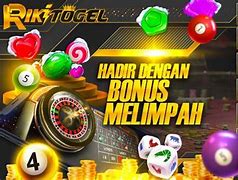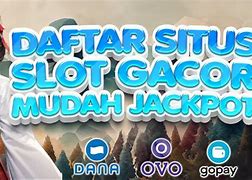
film kartun Disney superhero
Dalam dunia perfilman, superhero memang selalu menjadi karakter yang digemari oleh banyak orang. Disney sebagai salah satu studio produksi film populer di dunia pun tidak ketinggalan untuk membuat film kartun superhero yang memukau.
Berikut ini adalah 11 film kartun Disney superhero yang akan membuat Bunda terhibur dan terinspirasi.
Ahli robot Hiro yang tinggal di kota San Fransokyo. Hiro memiliki teman dekat yaitu Baymax, sebuah robot yang tujuan utamanya adalah untuk menjaga keselamatan orang.
Sebuah peristiwa terjadi membuat Hiro terlibat di tengah plot berbahaya. Dia mengubah Baymax dan teman-temannya yang lain, Go Go Tamago, Wasabi, Honey Lemon, dan Fred menjadi sekelompok pahlawan dengan teknologi tinggi.
A Bug's Life (1998)
Animasi ini mengisahkan kehidupan para semut dan menyoroti kisah hidup Flik. Flik merupakan salah satu semut yang selalu mengacaukan koloninya dengan tingkah-tingkah yang tak sengaja ia lakukan.
Ia bahkan menghancurkan stok makanan untuk belalang dan berakibat koloninya mendapat ancaman. Flik melakukan perjalanan panjang untuk mempertahankan koloninya
Television programming
Walt Disney Animation Studios announced its expansion into television programming in 2020 and is currently producing original shows for Disney+, including Tiana (TBA).[373]
This list includes film series and/or franchises featuring theatrical films, short films, and television series produced by either Walt Disney Animation Studios or follow-ups of them made by Disney's direct-to-video/television units such as Disney Television Animation or Disneytoon Studios through the years, as well as live-action films.
–2010: Rebound, Disney's acquisition of Pixar and renaming
Iger later said, "I didn't yet have a complete sense of just how broken Disney Animation was." He described its history since the early 1990s as "dotted by a slew of expensive failures" like Hercules and Chicken Little; the "modest successes" like Mulan and Lilo & Stitch were still critically and commercially unsuccessful compared to the earlier films of the Disney Renaissance.[202] After Iger became CEO, Jobs resumed negotiations for Pixar with Disney.[205] On January 24, 2006, Disney announced that it would acquire Pixar for $7.4 billion in an all-stock deal,[206] with the deal closing that May,[205][207][208] and the Circle 7 studio launched to produce Toy Story 3 was shut down,[209][210] with most of its employees returning to Feature Animation and Toy Story 3 returning to Pixar's control.[211] Iger later said that it was "a deal I wanted badly, and [Disney] needed badly." He believed that Disney Animation needed new leadership[202] and, as part of the acquisition, Edwin Catmull and John Lasseter were named president and Chief Creative Officer, respectively, of Feature Animation as well as Pixar.[207]
While Disney executives had discussed closing Feature Animation as redundant, Catmull and Lasseter refused and instead resolved to try to turn things around at the studio.[212] Lasseter said, "We weren't going to let that [closure] happen on our watch. We were determined to save the legacy of Walt Disney's amazing studio and bring it back up to the creative level it had to be. Saving this heritage was squarely on our shoulders."[213] Lasseter and Catmull set about rebuilding the morale of the Feature Animation staff,[214][215] and rehired a number of its 1980s "new guard" generation of star animators who had left the studio, including Ron Clements, John Musker, Eric Goldberg,[108] Mark Henn, Andreas Deja, Bruce W. Smith and Chris Buck.[216] To maintain the separation of Walt Disney Feature Animation and Pixar despite their now common ownership and management, Catmull and Lasseter "drew a hard line" that each studio was solely responsible for its own projects and would not be allowed to borrow personnel from or lend tasks out to the other. Catmull said that he and Lasseter would "make sure the studios are quite distinct from each other. We don't want them to merge; that would definitely be the wrong approach. Each should have its own personality."[217][218]
Catmull and Lasseter also brought to Disney Feature Animation the Pixar model of a "filmmaker-driven studio" as opposed to an "executive-driven studio"; they abolished Disney's prior system of requiring directors to respond to "mandatory" notes from development executives ranking above the producers in favor of a system roughly analogous to peer review, in which non-mandatory notes come primarily from fellow producers, directors and writers.[213][219][220] Most of the layers of "gatekeepers" (midlevel executives) were stripped away, and Lasseter established a routine of personally meeting weekly with filmmakers on all projects in the last year of production and delivering feedback on the spot.[221] The studio's team of top creatives who work together closely on the development of its films is known as the Disney Story Trust; it is somewhat similar to the Pixar Braintrust,[219][222] but its meetings are reportedly "more polite" than those of its Pixar counterpart.[223]
In 2007, Lasseter changed the name of Walt Disney Feature Animation to Walt Disney Animation Studios,[224] and re-positioned the studio as an animation house that produced both traditional and computer-animated projects. In order to keep costs down on hand-drawn productions, animation, design and layout were done in-house at Disney while clean-up animation and digital ink-and-paint were farmed out to vendors and freelancers.[225]
The studio released Meet the Robinsons in 2007, its second all-CGI film, earning $169.3 million worldwide.[226] That same year, Disneytoon Studios was also restructured and began to operate as a separate unit under Lasseter and Catmull's control.[227] Lasseter's direct intervention with the studio's next film, American Dog, resulted in the departure of director Chris Sanders,[228] who went on to become a director at DreamWorks Animation.[229] The film was retooled by new directors Byron Howard and Chris Williams as Bolt, which was released in 2008 and had the best critical reception of any Disney animated feature since Lilo & Stitch[230] and became a moderate financial success, receiving an Academy Award nomination for Best Animated Film.[231]
The Princess and the Frog, loosely based on the fairy tale The Frog Prince and the 2002 novel The Frog Princess, and directed by Ron Clements and John Musker, was the studio's first hand-drawn animated film in five years. A return to the musical-comedy format of the 1990s with songs by Randy Newman,[232] the film was released in 2009 to a positive critical reception and was also nominated for three Academy Awards, including two for Best Song.[233] The box office performance of The Princess and the Frog – a total of $267 million earned worldwide against a $105 million production budget – was seen as an underperformance due to competition with Avatar.[231] The underperformance was also attributed to the word "Princess" in the title, resulting in future Disney films then in production about princesses being given gender-neutral, symbolic titles: Rapunzel became Tangled and The Snow Queen became Frozen.[214][234][235][236] In 2014, former Disney animator Tom Sito compared the film's box office performance to that of The Great Mouse Detective (1986), which was a step-up from the theatrical run of the 1985 film The Black Cauldron.[237] In 2009, the studio also produced the computer-animated Prep & Landing holiday special for the ABC television network.[238]
American animation studio
Walt Disney Animation Studios (WDAS),[6] sometimes shortened to Disney Animation, is an American animation studio that creates animated features and short films for The Walt Disney Company. The studio's current production logo features a scene from its first synchronized sound cartoon, Steamboat Willie (1928). Founded on October 16, 1923, by brothers Walt Disney and Roy O. Disney after the closure of Laugh-O-Gram Studio,[1] it is the longest-running animation studio in the world. It is currently organized as a division of Walt Disney Studios and is headquartered at the Roy E. Disney Animation Building at the Walt Disney Studios lot in Burbank, California.[7] Since its foundation, the studio has produced 63 feature films, with its first release being Snow White and the Seven Dwarfs (1937), which is also the first hand drawn animated feature film, and its most recent release was Moana 2 (2024).[8] The studio has also produced hundreds of short films.
Founded as Disney Brothers Cartoon Studio (DBCS) in 1923, renamed Walt Disney Studio (WDS) in 1926 and incorporated as Walt Disney Productions (WDP) in 1929, the studio was dedicated to producing short films until it entered feature production in 1934, resulting in 1937's Snow White and the Seven Dwarfs, one of the first full-length animated feature films and the first U.S.-based one. In 1986, during a large corporate restructuring, Walt Disney Productions, which had grown from a single animation studio into an international media conglomerate, was renamed The Walt Disney Company and the animation studio became Walt Disney Feature Animation (WDFA) in order to differentiate it from the company's other divisions. Its current name was adopted in 2006 after Pixar Animation Studios was acquired by Disney.
For many people, Disney Animation is synonymous with animation, for "in no other medium has a single company's practices been able to dominate aesthetic norms" to such an overwhelming extent.[9] The studio was recognized as the premier American animation studio for much of its existence[10] and was "for many decades the undisputed world leader in animated features";[11] it developed many of the techniques, concepts and principles that became standard practices of traditional animation.[12] The studio also pioneered the art of storyboarding, which is now a standard technique used in both animated and live-action filmmaking, as well as television shows and video games.[13] The studio's catalog of animated features is among Disney's most notable assets, with the stars of its animated shorts—Mickey Mouse, Minnie Mouse, Donald Duck, Daisy Duck, Goofy, and Pluto—becoming recognizable figures in popular culture and mascots for the Walt Disney Company as a whole.
Three of the studio's films—Frozen (2013), Zootopia (2016), and Frozen II (2019)—are all among the 50 highest-grossing films of all time, with the latter becoming the third-highest-grossing animated feature film of all time.
By 2013, the studio had no hand-drawn animated features in development as a result of their computer animated films performing better at the box office, and had laid off a large portion of their hand-drawn animators.[14][15] However, the studio stated in 2019 and 2023 that they are open to proposals from filmmakers for future hand-drawn feature projects.[16][17] In addition, in April 2022, Eric Goldberg, one of the studio's hand-drawn animators who has been working with the studio since 1992, confirmed plans within the Disney studio to once again return to hand-drawn animation.[18]
Beauty and The Beast (1991)
Mengisahkan seorang pangeran yang dikenal memiliki sifat arogan tinggal bersama para pelayannya di sebuah kastil. Namun, tiba-tiba saja seorang penyihir menyihir mereka hingga mengubah sang pangeran menjadi seperti binatang dan para pelayan menjadi benda-benda.
Suatu hari seorang gadis desa yang rajin dan keras kepala bernama Belle memasuki kastil Beast, karena Beast telah memenjarakan sang ayah. Dengan bantuan para pelayannya yang terpesona, Belle mulai menarik Beast yang berhati dingin keluar dari keterasingannya.
Seorang remaja perempuan bernama Moana memutuskan untuk pergi berpetualang dengan berlayar untuk menyelamatkan bangsanya. Dalam perjalanan, ia bertemu dengan Dewa Maui yang membantunya untuk mencari jalan.
Bersama-sama mereka berlayar melintasi lautan menghadapi monster-monster besar dan bahaya sepanjang jalan untuk pencarian kuno leluhurnya.
–1966: Return of feature films, Buena Vista, end of shorts, layoffs and Walt's final years
In 1948, Disney returned to the production of full-length features with Cinderella, a feature film based on the fairy tale by Charles Perrault. At a cost of nearly $3 million, the future of the studio depended upon the success of this film.[75] Upon its release in 1950, Cinderella proved to be a box-office success, with the profits from the film's release allowing Disney to carry on producing animated features throughout the 1950s. Following its success, production on the in-limbo features Alice in Wonderland, Peter Pan, and Lady and the Tramp was resumed. In addition, an ambitious new project, an adaptation of the Brothers Grimm fairy tale "Sleeping Beauty" set to Tchaikovsky's classic score, was begun but took much of the rest of the decade to complete.[77]
Alice in Wonderland, released in 1951, met with a lukewarm response at the box office and was a sharp critical disappointment in its initial release.[78] Peter Pan, released in 1953, on the other hand, was a commercial success and the sixth highest-grossing film of the year. In 1955, Lady and the Tramp was released to higher box office success than any other Disney animated feature since Snow White and the Seven Dwarfs,[79] earning an estimated $6.5 million in rentals at the North American box office in 1955.[80] Lady and the Tramp is significant as Disney's first widescreen animated feature, produced in the CinemaScope process,[79] and was the first Disney animated feature to be released by Disney's own distribution company, Buena Vista Distribution.[81]
By the mid-1950s, with Walt Disney's attention primarily set on new endeavours such as live-action films, television and the Disneyland theme park,[62] production of the animated films was left primarily in the hands of the "Nine Old Men" trust of head animators and directors. This led to several delays in approvals during the production of Sleeping Beauty,[62] which was finally released in 1959. At $6 million,[82] it was Disney's most expensive film to date, produced in a heavily stylised art style devised by artist Eyvind Earle[82] and presented in large-format Super Technirama 70 with six-track stereophonic sound.[82] However, despite being the studio's highest-grossing animated feature since Snow White and the Seven Dwarfs, the film's large production costs and the box office underperformance of Disney's other 1959 output resulted in the studio posting its first annual loss in a decade for fiscal year 1960,[83] leading to massive layoffs throughout the studio.[84]
By the end of the decade, the Disney short subjects were no longer being produced on a regular basis, with many of the shorts divisions' personnel either leaving the company or being reassigned to work on Disney television programs such as The Mickey Mouse Club and Disneyland. While the Silly Symphonies shorts had dominated the Academy Award for Best Short Subject (Cartoons) during the 1930s, its reign over the most awards had been ended by MGM's Tom and Jerry cartoons, Warner Bros' Looney Tunes and Merrie Melodies, and the works of United Productions of America (UPA), whose flat art style and stylized animation techniques were lauded as more modern alternatives to the older Disney style.[85] During the 1950s, only one Disney short, the stylized Toot, Whistle, Plunk and Boom, won the Best Short Subject (Cartoons) Oscar.[86]
The Mickey Mouse, Pluto and Goofy shorts had all ceased regular production by 1953, with Donald Duck and Humphrey continuing and converting to widescreen CinemaScope before the shorts division was shut down in 1956. After that, all future shorts were produced by the feature films division until 1969. The last Disney short of the golden age of animation was It's Tough to Be a Bird. Disney shorts would only be produced on a sporadic basis from this point on,[72] with notable later shorts including[87] Runaway Brain (1995, starring Mickey Mouse)[88] and Paperman (2012).[89]
Despite the 1959 layoffs and competition for Walt Disney's attention from the company's expanded live-action film, TV and theme park departments, production continued on feature animation productions at a reduced level.[77]
In 1961, the studio released One Hundred and One Dalmatians, an animated feature that popularized the use of xerography during the process of inking and painting traditional animation cels.[90] Using xerography, animation drawings could be photochemically transferred rather than traced from paper drawings to the clear acetate sheets ("cels") used in final animation production.[90] The resulting art style – a scratchier line which revealed the construction lines in the animators' drawings – typified Disney films into the 1980s.[90] The film was a success, being the tenth highest-grossing film of 1961 with rentals of $6.4 million.[91]
The Disney animation training program started at the studio in 1932 before the development of Snow White eventually led to Walt Disney helping found the California Institute of the Arts (CalArts).[92] This university formed via the merger of Chouinard Art Institute and the Los Angeles Conservatory of Music. It included a Disney-developed animation program of study among its degree offerings. CalArts became the alma mater of many of the animators who would work at Disney and other animation studios from the 1970s to the present.[92]
The Sword in the Stone was released in 1963 and was the sixth highest-grossing film of the year in North America with estimated rentals of $4.75 million.[93] A featurette adaptation of one of A. A. Milne's Winnie-the-Pooh stories, Winnie the Pooh and the Honey Tree, was released in 1966,[94] to be followed by several other Pooh featurettes over the years and a full-length compilation feature, The Many Adventures of Winnie the Pooh, which was released in 1977.[94]
Walt Disney died in December 1966, ten months before the studio's next film The Jungle Book, was completed and released.[95] The film was a success,[96] finishing 1967 as the fourth highest-grossing film of the year.[97]
Marvel Super Hero Adventures: Frost Fight! (2015)
Saat Loki dan Frost Fight merencanakan menaklukkan dunia dengan rencana-rencana berbahaya dan tak terduga. Mengetahui hal itu tim pahlawan Marvel berkumpul untuk menghentikan Loki mencuri kekuatan dari Sinterklas dan menggagalkan misi jahat Loki.
Planet Hulk (2010)
Jika Hulk sedang marah ia akan berubah menjadi sosok yang besar, hijau, dan pemarah. Suatu saat, ia menjadi penumpang pesawat ulang-aling yang mendarat di planet Sakaar.
Planet Sakaar ini dikuasai oleh Raja Merah yang jahat yang suka mengadu domba prajurit satu sama lain di arena besar. Hulk mulai bekerjasama dengan sesama prajurit. Kekuatan mereka begitu besar saat bekerjasama. Mereka bersatu untuk mengalahkan penculik. Namun, mereka kalah jumlah dan kurang perlengkapan.
film kartun animasi Disney tahun 90-an terbaik rating tertinggi
Di era 90-an, Disney memiliki sejumlah film kartun animasi yang menjadi favorit banyak orang dan mendapatkan rating tertinggi. Berikut ini adalah 10 film kartun animasi Disney tahun 90-an terbaik yang berhasil mendapatkan rating tertinggi.



